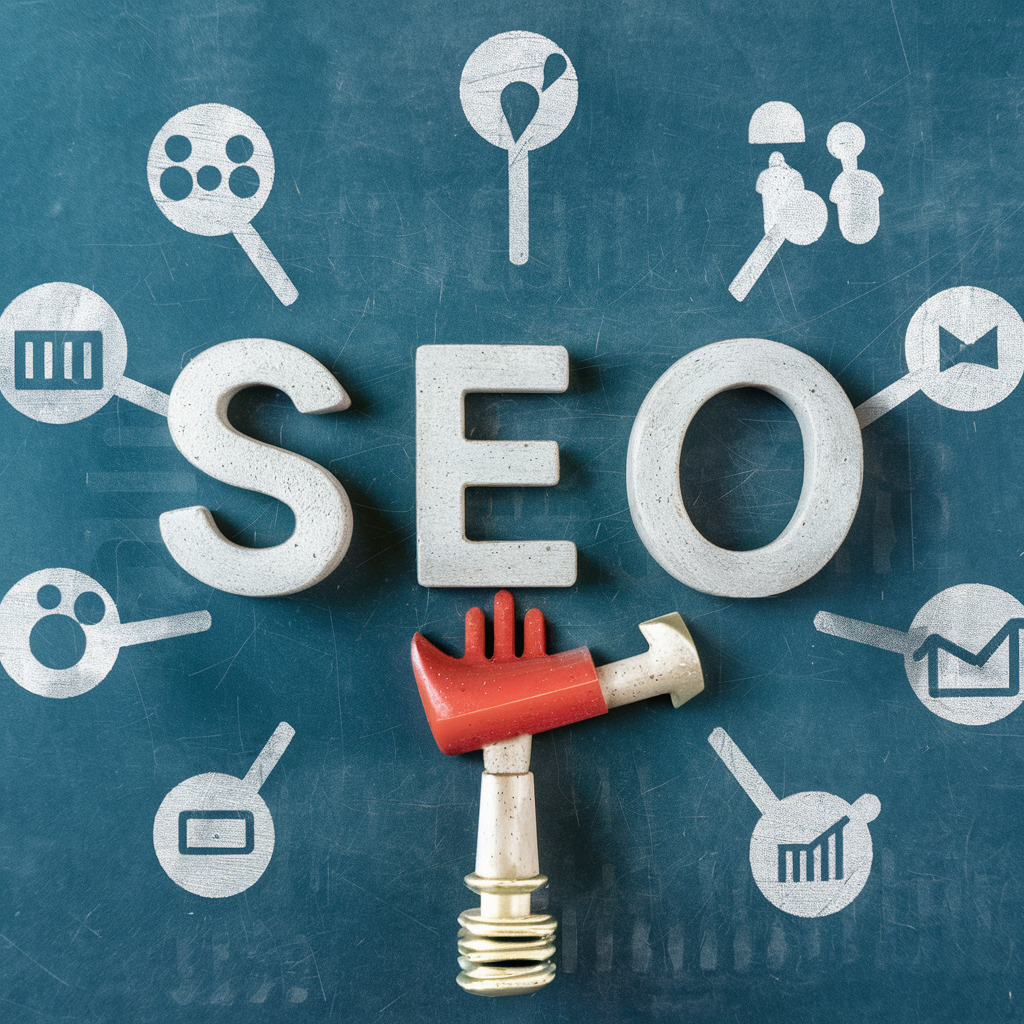Written by Gemini
I. TL;DR (Too Long; Didn’t Read)
On-page SEO is the practice of optimising the content and code of your individual web pages to rank higher in search results. The most crucial actions include creating high-quality content that matches what users are searching for, optimising your title tags and headings, making your images work for you, and using internal links to guide both users and search engines. It’s the part of SEO you have the most direct control over.
This guide will walk you through everything you need to know about on-page SEO, explaining what it is, why it’s vital, and providing a practical checklist you can use to optimise your own website pages for better search engine rankings.
II. Introduction
When it comes to SEO, it can sometimes feel like you’re dealing with factors outside of your control. But what if I told you there’s a huge part of SEO that you have complete power over? That’s on-page SEO. It’s the foundation upon which all your other efforts, from link building to local marketing, are built.
Mastering the elements on your own pages is the first and most critical step to climbing the search rankings. This post will serve as your definitive guide to doing just that.
What is On-Page SEO?
Let’s start with a clear definition. On-page SEO (sometimes called on-site SEO) is the practice of optimising the content and HTML source code of individual web pages to improve their search engine rankings and earn relevant traffic. It’s all the things you do on your page to signal to search engines what your content is about and why it’s valuable.
- How does it differ from Off-Page and Technical SEO? It’s helpful to think of SEO in three parts. On-page SEO is what’s on the page (your words, images, headlines). Off-page SEO is what happens elsewhere on the web to build your site’s authority (like earning backlinks, which we cover in our backlink strategy guide). And Technical SEO is the foundation of your website (its speed, security, and how easily search engines can crawl it). You need all three, but on-page is where you start.
Why is On-Page SEO Important?
On-page SEO is how you communicate directly with search engines. It’s how you tell Google: “Hey, this page is about ‘X,’ it’s high-quality, and it’s the best answer for people searching for this topic.” Without strong on-page SEO, search engines struggle to understand your content, no matter how brilliant it is. It’s the foundation that makes all your other efforts worthwhile and is a key part of how search engines rank websites.
What is Your On-Page SEO Checklist?
Ready to get hands-on? Here is a practical checklist for doing on-page SEO right, broken down into logical sections.
Section 1: The Content Elements
- Create High-Quality, Valuable Content: This is, and always will be, the most important factor. Your content must be unique, comprehensive, and expertly written. Most importantly, it must satisfy the user’s search intent. Are they looking to learn something, buy something, or find a specific site? Your content must align perfectly with that goal.
- Use Keywords Strategically: Once you’ve done your keyword research, you need to use those keywords effectively.
- Place your primary keyword naturally within the first 100 words of your article.
- Weave your primary keyword and relevant variations throughout the text, but always prioritise readability. Never force it – this is known as “keyword stuffing” and can harm your rankings.
- Use Original Images & Videos: Stock photos are fine, but original images, screenshots, infographics, and videos make your content more engaging, more valuable, and more unique – all things search engines love to see.
Section 2: The HTML Elements
- Optimise Your Title Tag: The title tag is the clickable blue link that appears in search results. It’s a powerful on-page signal. It should be unique for every page, under 60 characters, and include your primary keyword, preferably near the beginning.
- Write a Compelling Meta Description: This is the short snippet of text under your title tag in the search results. While not a direct ranking factor, it’s your “ad copy” on the SERP. A great meta description entices users to click on your result over a competitor’s, which boosts your click-through rate (CTR).
- Use Headings to Structure Your Content: Headings (H1, H2, H3, etc.) create a logical structure for your content. Your page title should be your one and only H1 tag. Use H2s for your main sections and H3s for sub-sections. This makes your content easier for people to read and helps search engines understand the hierarchy of your information.
- Optimise Your Images: Search engines can’t “see” images, so you need to give them context.
- Use descriptive file names (e.g.,
on-page-seo-checklist.jpginstead ofIMG_1234.jpg). - Fill out the alt text for every image. This describes the image for visually impaired users and gives search engines crucial information about the image’s content.
- Use descriptive file names (e.g.,
Section 3: The Site Architecture Elements
- Create SEO-Friendly URLs: Your page’s URL should be short, easy to read, and include your primary keyword. For example:
needseo.co.uk/what-is-on-page-seois much better thanneedseo.co.uk/p?id=123. - Use Internal Links: Link to other relevant pages on your own website within your content. This helps users discover more of your great content, and it helps search engines understand the relationship between your pages and spread authority throughout your site.
- Use External (Outbound) Links: Don’t be afraid to link out to other high-quality, authoritative websites. Citing your sources and linking to helpful resources shows that your content is well-researched and provides value, which are positive signals.
What Are Some Advanced On-Page Tactics?
Once you’ve mastered the basics, you can explore more advanced tactics:
- Optimise for User Experience (UX): Factors like readability, a clear page layout, and avoiding annoying pop-ups keep users on your page longer. This sends positive engagement signals to Google, indicating that your page is a good result.
- Implement Schema Markup: This is a type of “structured data” you can add to your site’s code. It doesn’t make you rank higher directly, but it helps search engines understand your content on a deeper level. This can lead to “rich snippets” (like star ratings or FAQs) appearing in search results, which can dramatically improve your click-through rate. You can learn more about it from Schema.org.
Conclusion
Great on-page SEO isn’t about finding secret tricks to fool Google. It’s about making your content as clear, valuable, and easily understood as possible – for both your human readers and for search engine crawlers. These are the foundational elements you can control to directly influence your rankings and build a website that stands the test of time.
Feeling overwhelmed by your on-page SEO checklist? It can be a lot to manage, but getting it right is crucial. Contact NeedSEO today, and let us handle the optimisation to ensure your website is sending all the right signals to Google. Sources









